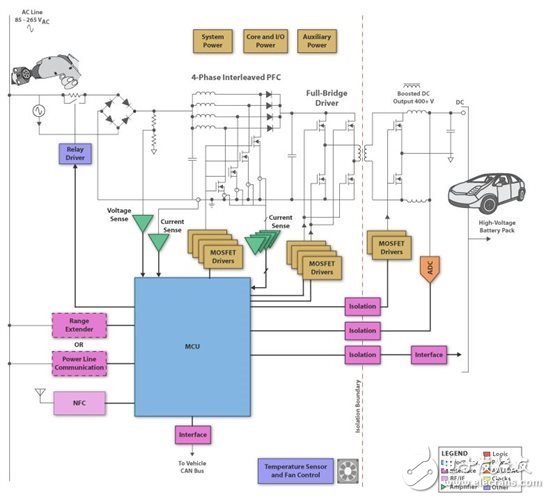What are all about the electrification discussion in the automotive field? There have been many articles on batteries, especially the 48V and 400V lithium-ion batteries and 12V lead-acid batteries, and the challenge of coexisting in a car with increasing load requirements. Traction motors, steering, on-board charging, compressors, and regenerative braking in the drive train require more than 1 kW of power, which is much higher than previously required.
Dealing with traditional 12V battery loads used in infotainment, dashboards, and security applications is challenging because it is both inefficient and cumbersome for cars, requiring a large number of wire harnesses to handle large currents. Operating these loads at a regulated voltage (above 12V) provided by traditional 12V lead-acid batteries can significantly reduce power consumption, wiring complexity, and overall system weight. This is where 48V lithium-ion batteries are used in hybrid and ICE cars, and 400V lithium-ion batteries are used in electric vehicles. A larger voltage means that transmitting the same energy and current is lower, which means lower power consumption, which reduces the need for a large number of wires. This is why the two batteries need to coexist while transmitting power at a very high efficiency.

Hybrid car charger system block diagram
Because of the need to achieve high efficiency, the need to use different batteries and achieve greater power, the efficient energy transfer regulation system using switch mode power supply (SMPS) is more attractive than the past linear regulator. The SMPS helps the application to operate in the on and off states, which theoretically achieves 100% energy transfer efficiency. With the advancement of power electronic switches, the use of the SMPS concept can help automakers strive to meet these requirements.
So how does SMPS work? The switch can be turned on and off with pulse width modulation (PWM) technology. These switches operate at high switching frequencies, making power converters less bulky and smaller. The PWM can be implemented using an analog or digital controller followed by a gate driver circuit to provide the appropriate charge switching power supply and operate at the correct operating voltage. The gate driver enables a power system with excellent performance and efficiency.
The choice of controller depends primarily on the requirements of the vehicle, taking into account cost, flexibility, integration, reliability and firmware write availability (for digital controllers). Similarly, the choice of gate driver depends on driver current, maximum allowable operating voltage, speed (reducing propagation delay), and lower cost components (single channel and bridge drivers) and isolation. Texas Instruments has several analog and digital automotive certification controllers (read this when choosing between analog and digital) and the industry's fastest gate drivers for running SMPS switches.
Patch panel include cat6 patch panel and cat5e patch panel supports Ethernet, made for Cat 6 cabling, but backwards compatible with Cat 5e and Cat 5 cabling.
CAT6 patch panel network connection for 10-Gigabit Ethernet with this durable RJ45 patch panel
Install this Ethernet patch panel effortlessly in universal 19" racks, cabinets, or wall mount brackets with 1U (1.75") standard height
Gold plated contacts ensure a correction free connection. Numbered ports and color-coded T568A and T568B wiring diagram give quick reference
Network patch panel complies with the fire safety requirement. Use included D-rings and cable ties for easy cable management.
Patch Panel Rack,Fiber Patch Panel,Network Patch Panel,Keystone Patch Panel
Shenzhen Kingwire Electronics Co., Ltd. , https://www.kingwires.com